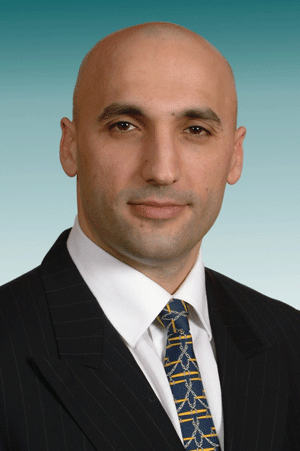Siskinds LLP has filed the first class action on behalf of Canadian investors against a corporation not listed on the TSX, targeting U.S. insurer American International Group, a company that fell apart in September after the bottom fell out of mortgage-backed securities it had gambled on.

“We feel that Canadians, notwithstanding this is an American corporation, if they’ve sustained losses as a result of the actions alleged within the claim, should have the opportunity to seek a remedy in their courts under their own legal regime.
And there are distinct advantages to them doing that,” says Dimitri Lascaris, the Siskinds lawyer prosecuting the lawsuit.
The $550-million class action was filed last week under Part 23.1 of the Ontario Securities Act on behalf of all Canadian residents and entities that acquired AIG securities from Nov. 10, 2006, to Sept. 16, 2008. It is aimed at AIG, AIG Financial Products Corp., and directors and officers of the companies, Siskinds says.
“The AIG class action arises out of AIGFP’s credit default swaps and the crippling decline in AIG’s stock price when the true effect of those credit default swaps became known to the investing public,” says a release from the London, Ont., firm announcing the lawsuit.
“The AIG disclosures out of which the class action arises are currently the subject of investigation by law enforcement authorities, and are alleged in the class action to have caused massive losses to Canadian investors.”
Siskinds had yet to serve AIG the pleading at press time, and Lascaris says he hopes to have that done “as soon as possible.”
Joe Norton, director of public relations for AIG, says the company “doesn’t comment on matters before the courts, or on lawsuits.”
There previously have been 12 cases filed under Part 23.1 of the Ontario Securities Act, says Lascaris, but this is the first time he knows of in which a section of that part has been used against a corporation not listed on the Toronto Stock Exchange.
That section says “you can assert claims under Part 23.1, against companies that are not reporting issuers, if there’s a real and substantial connection between that company and the jurisdiction of Ontario,” Lascaris paraphrases.
The benefits to class members pursuing the matter here, he says, include the fact that U.S. courts would force them to show that the defendants acted with scienter, meaning fraudulent intent. But in Ontario courts, he says,
defendants in this type of matter would we liable if negligence is proven.
Also, if a misrepresentation were established, the burden of proof in Ontario courts is on the defendants to show they were not negligent, he says.
Courts here also expect defendants to show what caused the class members to sustain damages, whereas plaintiffs must demonstrate that in U.S. courts, he says. A series of decisions in the U.S. make it difficult for plaintiffs to establish that defendants caused damages, says Lascaris.
He says he expects AIG to challenge Ontario courts’ right to hear the case. “We’ve turned our minds to it and gave a great deal of thought to that before we agreed to pursue this matter,” he says.
AIG initially received $85 billion from the U.S. government to help it stabilize after the collapse, but in November the Federal Reserve kicked in more money to bring the total to $150 billion.
“Obviously a company that had been a great favourite with investors in numerous jurisdictions including Canada has been brought to its knees,” says Lascaris. “We feel the causes of that are something that definitely merit litigation.”

 “We feel that Canadians, notwithstanding this is an American corporation, if they’ve sustained losses as a result of the actions alleged within the claim, should have the opportunity to seek a remedy in their courts under their own legal regime.
“We feel that Canadians, notwithstanding this is an American corporation, if they’ve sustained losses as a result of the actions alleged within the claim, should have the opportunity to seek a remedy in their courts under their own legal regime.